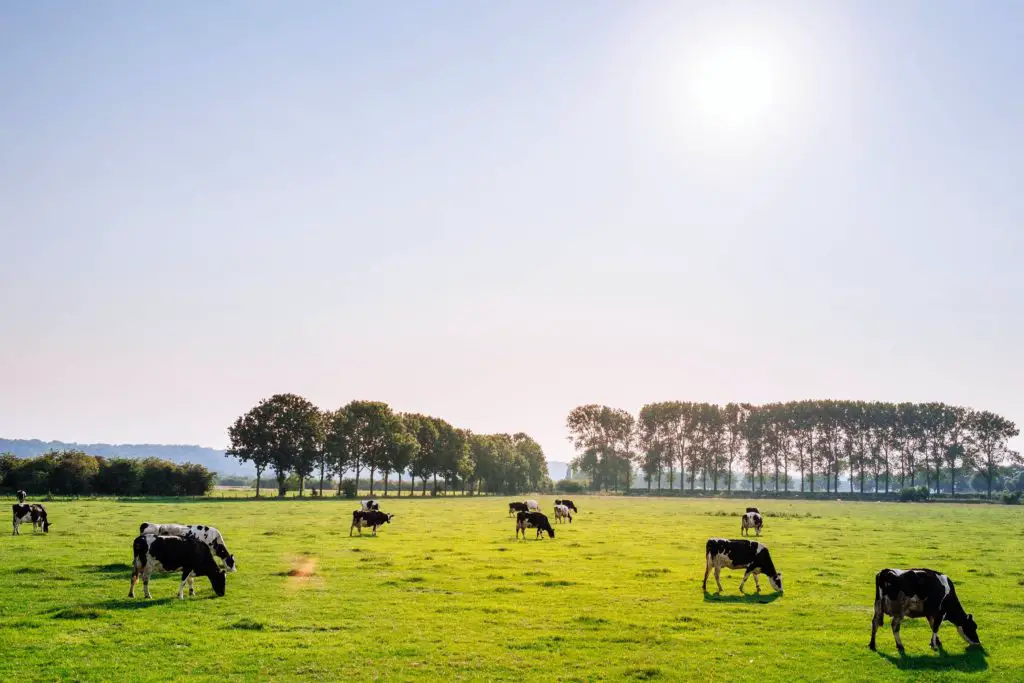Proper nutrition is necessary for animals to live, grow, develop and reproduce. This nutrition is obtained from the food they eat. Animals feed on a variety of diets which includes meat and grasses. The ones that feed on meat are mostly predators while the smaller prey feeds on grasses. The animals that feed on grasses are called Herbivores or Carnivores. The grass is their primary diet and without it, they would not be properly nourished. Some Herbivores that exist include rabbits, horses, cows, antelope, capybara, etc. Lets know about Animals That Eat Grass.

These animals can consume grasses because of their digestive system. They have microorganisms in their gut that produce Cellulase. This cellulase is an enzyme that breaks down the cellulose contained in grasses. Grasses are rich in nutrients like vitamin c, vitamin e, phosphorus, iron, etc. So, when these animals feed on grasses and it gets broken down, they benefit from the nutrients.
Here Are Some Animals That Feed On Grass
- Rabbits
It is natural for rabbits to feed on grass. If you keep rabbits as pets then you will be familiar with their love for shrubs and grasses. Rabbits like to nibble on fresh grasses within the reach of their feet in their owner’s or neighbors’ backyards. Even wild rabbits feed on grass voraciously.
The grass is rich in fiber and it is a requirement to keep the rabbit’s digestive system functioning perfectly. What you may not know is that, if you feed a rabbit with grass round the clock, it would help wear down its growing teeth to prevent bite injuries.
- Horses
The major grass that horses eat is the Bermuda grass. It is a warm-season grass that is safe for their consumption. However, horses can also feed on Dallisgrass, crabgrass and some other varieties, So long as it is cut and dry. Wet grass is harmful to their health.
A horse’s mouth can produce up to 10 gallons of saliva each day and this is good for the digestion of the grasses. Eating pasture is also good for their health because of the silica it contains.
- Cows
Grasses are the primary source of food for cows although calves do not eat grass. They drink only milk. Cows can eat 25 to 30 pounds of grass in a day and this makes up 3% of their body mass.
Any cattle rearer must have a large area of land where pasture grows or else they would be ready to take their cows out to graze because cows must eat grass. On some occasions, their feed is substituted for grains like barleys but green grass must be included in their diet.
Cows have a ruminant digestive system that allows them to break down grasses, digest them and regurgitate the indigestible ones. Regurgitation means, they throw the food up and chew it again until it is digested.
- Antelope
Antelopes are herbivores, although some species are known to feed on smaller animals, insects, etc. The ones that eat vegetables rely on them as their source of food. Antelopes feed on leaves on trees their mouth can reach, bushes, weeds, grasses, plants, and even flowers.
Antelopes have the same ruminant digestive system as cows. They can regurgitate indigestible food.
Antelopes have a preference for young, fresh, and wet grasses. This serves as a provision for both food and water because the food contains a reasonable amount of moisture.
- Capybara
Capybaras are rodents. They feed on mostly aquatic vegetation and grasses which make up 3% to 4% of their body mass. Capybaras can eat up to 6-8 pounds of grass in a day.
They also feed on their excreta. The waste product contains nutrients that aid in the easy digestion of the grasses.
As rodents, they have sharp teeth. Just like rabbits, the continuous feeding on grasses helps to file their teeth down to prevent bite injuries.
- Canada Goose
The Canada goose is a large species of bird. It is an animal with a brown body and a white head. They feed on grain as well as grass. This is possible because their gut has the cellulase enzyme that breaks down all the cellulose in grasses.
This wild animal needs a lot of vegetative materials to stay nourished and healthy. With their beak, they hold on to the blade of the grass and pull the entire plant out. So, they feed on the whole plant, from the leaves to the roots.
- Mites
Mites are commonly known to be pests of plants. This is because they feed on people’s farms and crops. They are so tiny that they are hard to spot and get rid of. The only way you can tell that mites are on your farm is if you see leftover leaves, that is leaves they have chewed on and webs. Mites spin webs like spiders.
Conclusion
There are a few other animals who feed on grasses solely and a number that feed on both leaves of grass and other diet items. The major takeaway from this article is that the animals that eat grasses do so because they have the right digestive system to break them down and utilise them.

